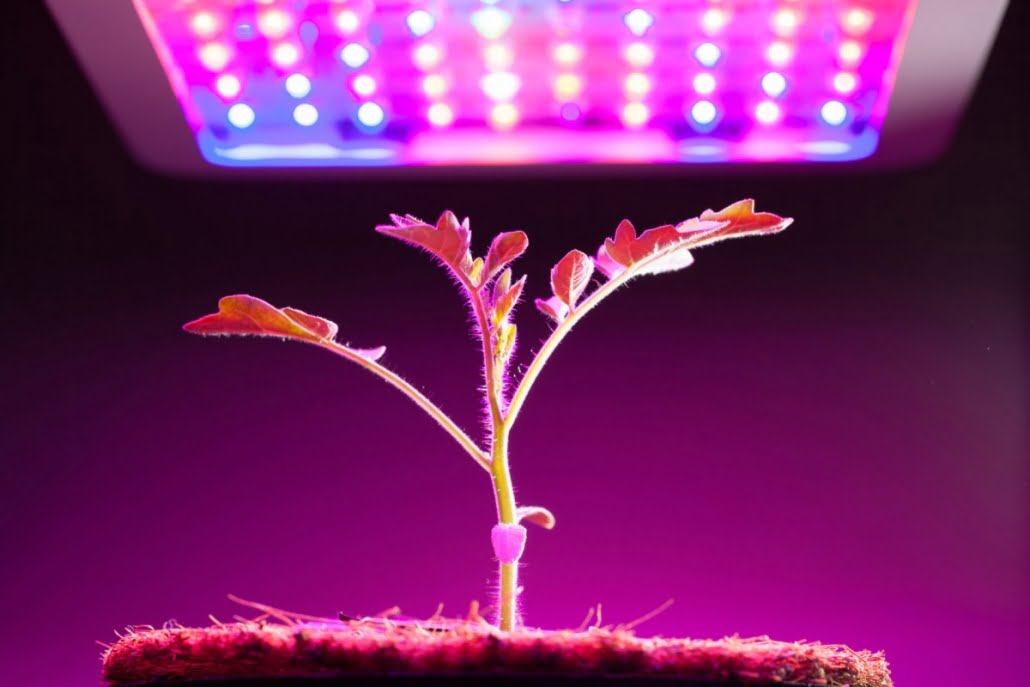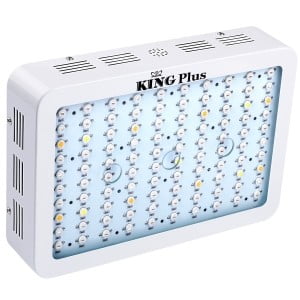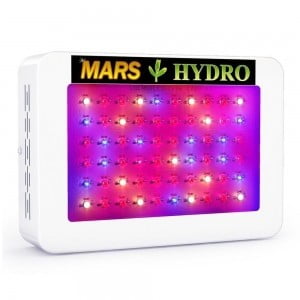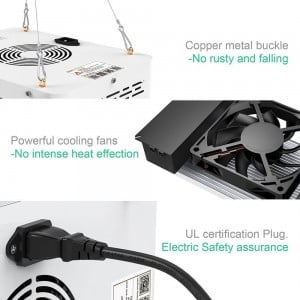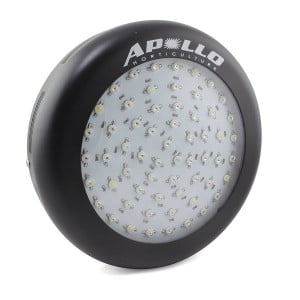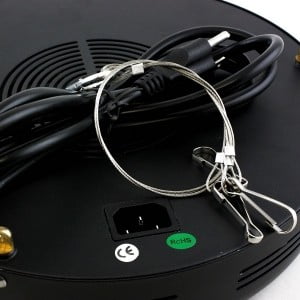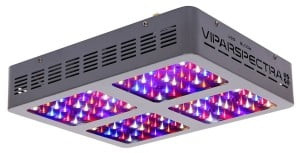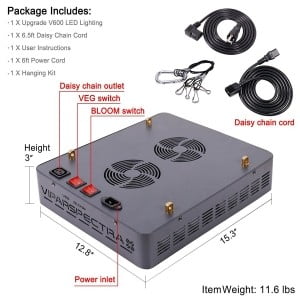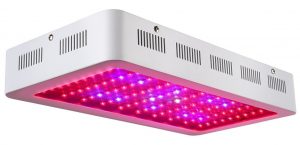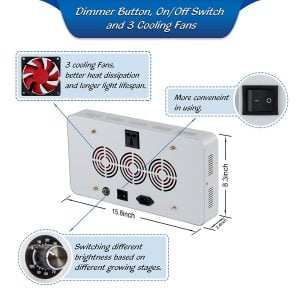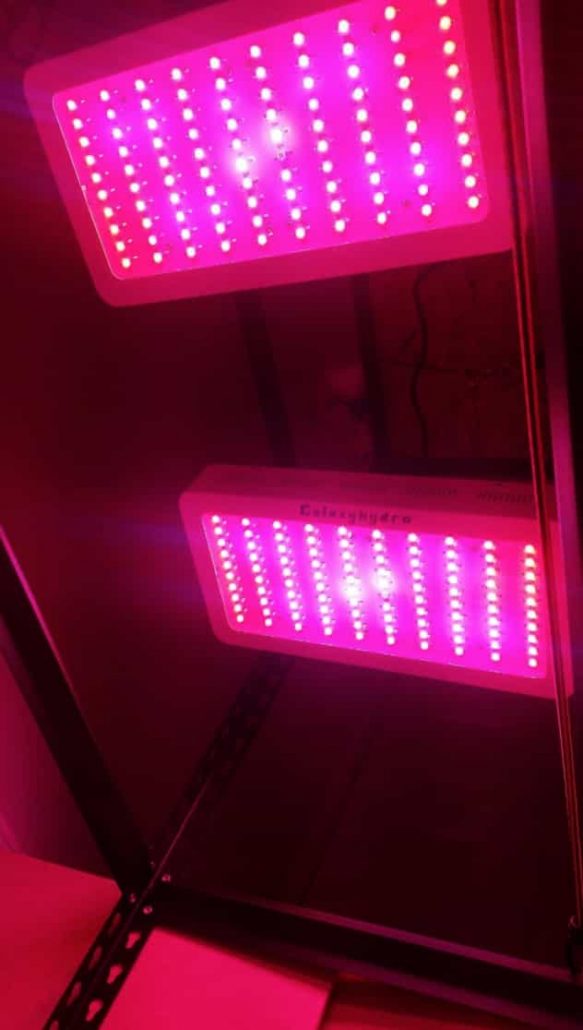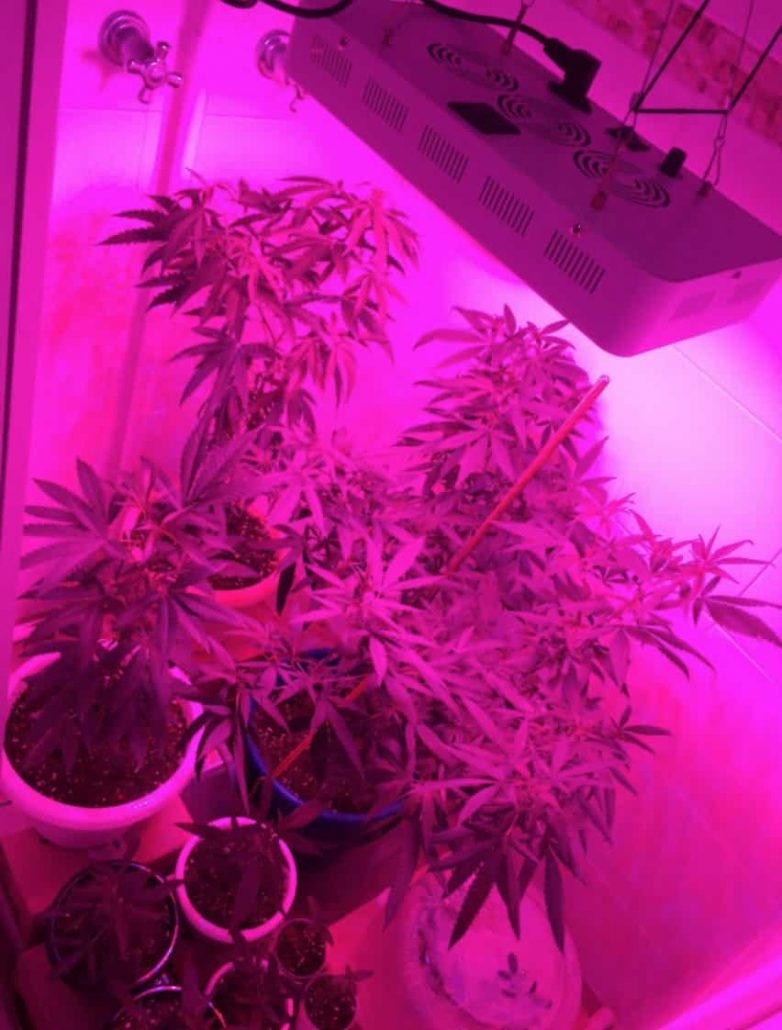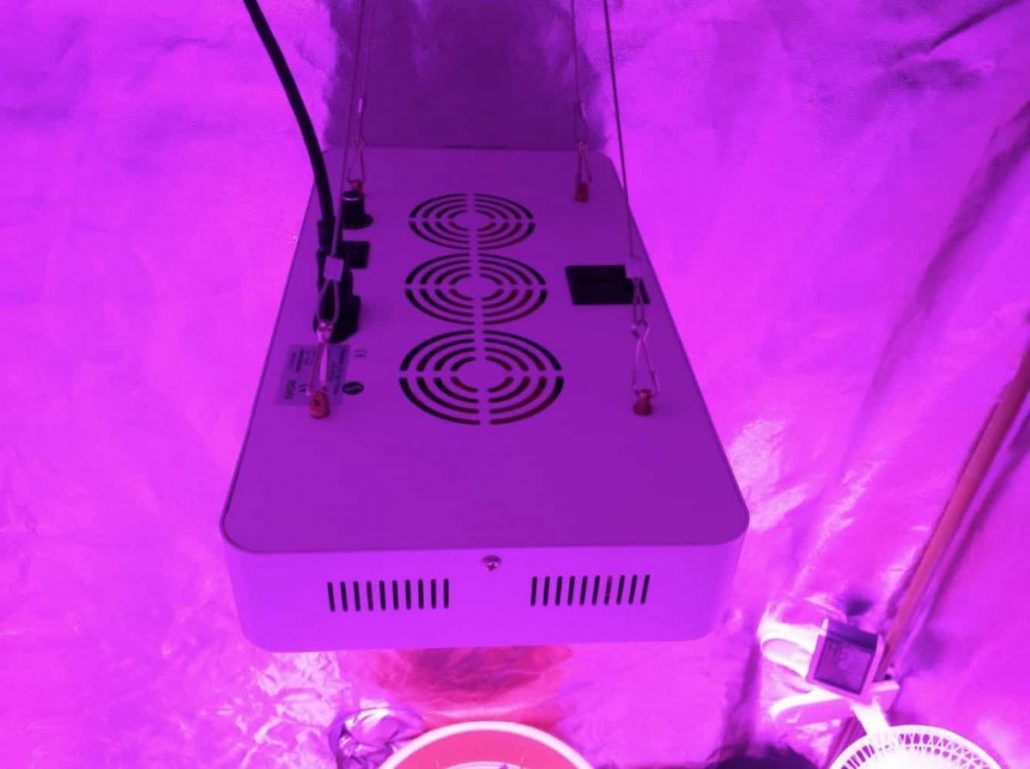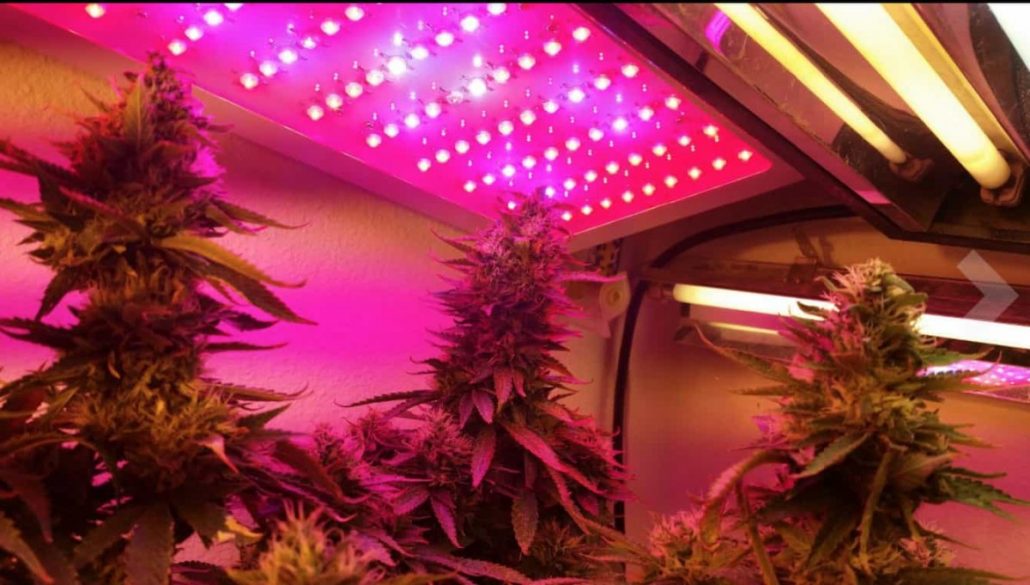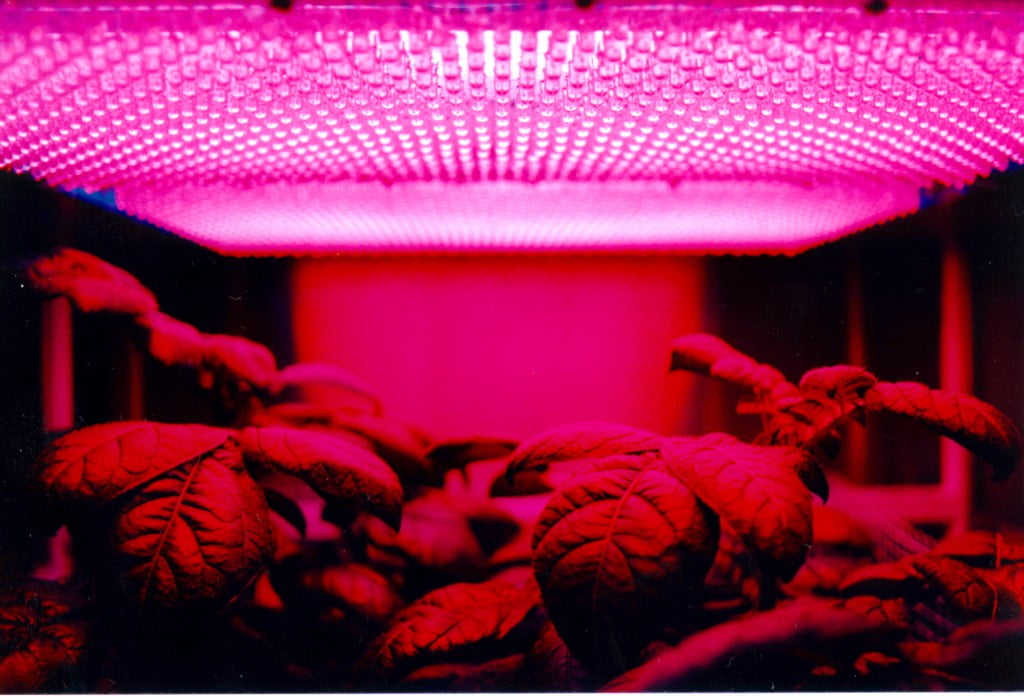 Indoor gardening ranges from a potted plant hanging by the window to full-fledged hydroponic systems with grow lights, nutrient and water delivery systems and sensors. The ideal setup for you depends on what you want to raise and the value you place on the crops.
Indoor gardening ranges from a potted plant hanging by the window to full-fledged hydroponic systems with grow lights, nutrient and water delivery systems and sensors. The ideal setup for you depends on what you want to raise and the value you place on the crops.
What Are the Benefits of Indoor Gardening with Grow Lights?
One of the top benefits of indoor gardening with artificial lighting is that you can grow plants out of season. It’s so cool because you can expose flowering plants to red light for example, and watch them bloom, just as if they were planted outside because you are providing the right conditions for growth. This benefit allows you to grow greens and blooms that usually grow in the spring or summer in the winter time.
Grow lights that let you put out specific wavelengths allow you to optimize for leaf growth or flowers. You end up with a higher yield for the part of the plant you want.
Another benefit of indoor gardening under grow lights is that you can grow plants that don’t normally grow in your area where you live at. This means that semi-tropical and tropical blooms could grow in your indoor garden even though they would never have a chance if raised outside.
 Another awesome benefit and this was a benefit that really excited me when I first started indoor gardening and it’s that you can control conditions to optimize your plants for certain traits. This means that you can raise lettuce and other leafy vegetables indoors to maximize for maximum yield and you will not have to worry about bugs to eat up and kill those plants.
Another awesome benefit and this was a benefit that really excited me when I first started indoor gardening and it’s that you can control conditions to optimize your plants for certain traits. This means that you can raise lettuce and other leafy vegetables indoors to maximize for maximum yield and you will not have to worry about bugs to eat up and kill those plants.
As we’ll discuss a bit later in the article in more detail, but another benefit depending on the lights you select, you could end up with local heat sources that keep semi-tropical and tropical plants warm even though they are sitting in an apartment that is constantly 70 degrees Fahrenheit inside.
Understanding Your Options with Grow Lights
The Benefits Of Using LED Grow Lights
LED grow lights such as the Hydrogalaxy 300w or 600w use a fraction of the power of other lighting technologies out there right now. For greenhouses, you could save up to half the energy you would need for HPS lights.
However, you need to be careful about the amount of light the LEDs release. Some of the LEDs offered as energy efficient are cheap and don’t put out as much light as other grow lights, with a number of them not even putting out enough light for the flowering phase. What I learned is that you can avoid this problem by selecting LED grow lights that put out at least 2.0 micromoles per Watt.
Durability of LED Grow Lights
One of the main benefits of using LED lights is that they last a lot longer than conventional or fluorescent lights. They don’t suddenly stop working, either, but dim slowly when their lifespan is being reached. Many LED Grow Lights today have auto shut off timers or programmable timers when you want the lights on, dimmed, or off.
Some nerd specs here, but it’s important to know and that is that LED lights put out light wavelengths ideal for photosynthesis; HPS lights, the traditional alternative, don’t put out light on the 400-500 and 600-700 nm range that is ideal for growing plants. You can also find LED lights that put out light in specific spectra like blue or deep red.
Daisy Chain Them Baby’s For Extra Coverage
 There is the matter of simplified lighting system designs, since you can use them in vertical systems, inter-lighting designs or ceiling lights. And many LED systems such as the Hydrogalaxy 300 can be daisy-chained, simplifying connected via wires that never touch the ground.
There is the matter of simplified lighting system designs, since you can use them in vertical systems, inter-lighting designs or ceiling lights. And many LED systems such as the Hydrogalaxy 300 can be daisy-chained, simplifying connected via wires that never touch the ground.
Heat Control and Economical Designs
LED lights don’t put out much heat either which is a plus. These lights are economical, producing more light per watt than fluorescents or HIDs.
If you want to expose plants to 24 hour light to accelerate growth, LED lights are the best choice. And if environmental issues are a factor, the fact that these lights don’t contain toxic substances like mercury is a plus.
Incandescent Lighting
Incandescent lights can be utilized as indoor grow lights in a few cases. They’re too hot to be right next to delicate plants though. They naturally put out a lot of light on the red side of the light spectrum but not the blue, so it can fuel growth of leafy greens and an herb garden but won’t be as good for woody plants.
You want blue light if fueling growth in the vegetative stage. You can use these to supplement natural light for your window herb garden and seedlings if not too close. The downside for these bulbs is their relatively high energy consumption.
Fluorescent Lighting
 Fluorescent lights have the benefits of energy efficiency and low heat generation. They also produce light across a broad spectrum. The downside is that they don’t put out a lot of light, so they work best as supplementary lights for plants that need more natural light than they’re getting.
Fluorescent lights have the benefits of energy efficiency and low heat generation. They also produce light across a broad spectrum. The downside is that they don’t put out a lot of light, so they work best as supplementary lights for plants that need more natural light than they’re getting.
Fluorescent lights are not good enough if you have sun loving plants that need high intensive lighting. Nor do they put out much in the red spectrum, something you want if maximizing leaf growth is what your looking for.
Fluorescent grow lights are manufactured and sell well due to their usefulness. In case your didn’t know fluorescent grow lights are measured by their diameter. A T5 is best for propagation of plants while they don’t work well for vegetative and flowering plants.
HID Lights (High Intensive Discharge)
A HID or high intensive discharge light uses large bulbs that ignite gas inside the bulb. HIDs may be high pressure sodium lights (HPS) or metal halides (MH). In either case, they use tungsten electrodes to ignite the gas within the bulb.
Metal halide lamps put out a lot of blue light which are ideal for the vegetative stage of plants. High pressure sodium lamps put out more light in the red spectrum, and these are ideal for flowering plants.
HID lamps create much more usable light than fluorescent bulbs. They’re often dimmable, though the same is true of LEDs. The downside of these lamps is the amount of heat they generate; they can’t be put a few inches above your plants without risking either burning them with heat or sun-burning them with the intensity of light.
What Is A Ballast?
Another consideration is the ballast; nearly any LED light can be plugged into ballasts designed for LED lights whereas some ballast only work with MH or HPS lights. If you want a mix of lights, you need several ballasts.
Reflectors
And then there is the need for extra hardware like reflectors. These bulbs do contain mercury, so you need to be careful not to break them while changing them out. If you’re using HPS lights, expect to need a ventilation system and AC system in your grow room. Conversely, LED lights get by with a fan that is often built into the ballast.
Light Emitting Ceramics
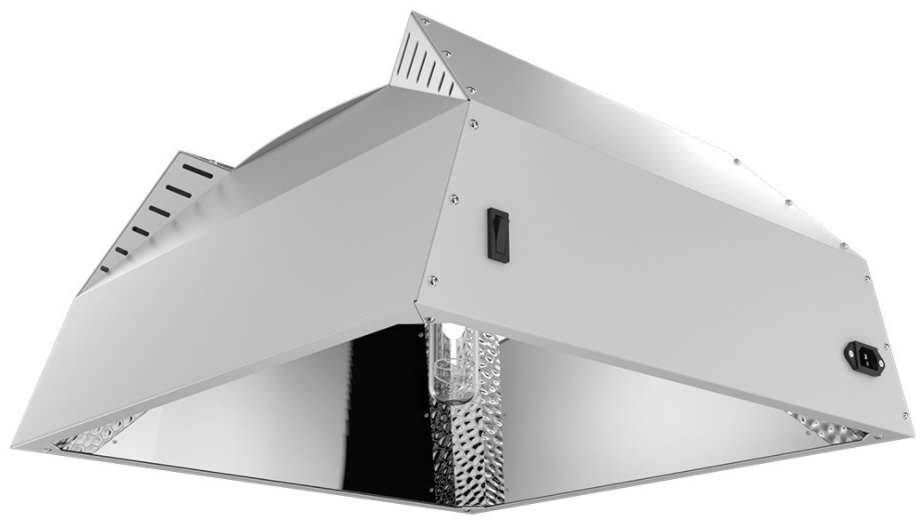
Light emitting ceramics are even more advanced. They use a ceramic arc like HPS bulbs but operate like halide lights. They last longer than metal halide and HPS lights. Their light spectrum is similar to natural light, ideal for both vegetable growth and flowering.
The downsides of these artificial grow lights are that you can only use magnetic ballasts and their cost. These are expensive and nowhere within my inventory of grow lights to tell you the truth. These are more for industrial purposes unless you just have the money, these are a good option.
Another negative aspect of these light emitting ceramics is the fact that they put out UV light. Other lights come with warnings that you shouldn’t look into them for risk of burning your retinas. These have that risk as well as the risk that they’ll cause sunburn. Wear long sleeves as well as UV-blocking sunglasses if you are considering using these lights.
Sulphur plasma grow lights resemble natural light, including putting out the bright light sun-loving plants will thrive under. The problem is that they can’t be put close to plants. These lights could be used at the top of high-ceiling grow rooms or greenhouses.
A good thing about these lights is that they are long-lasting. If you’re using them in a grow tent, they need to be high up because they could literally heat the tent if not burn it. On the downside, Plasma grow lights tend to be very expensive and because of this they are usually used for industrial purposes.

